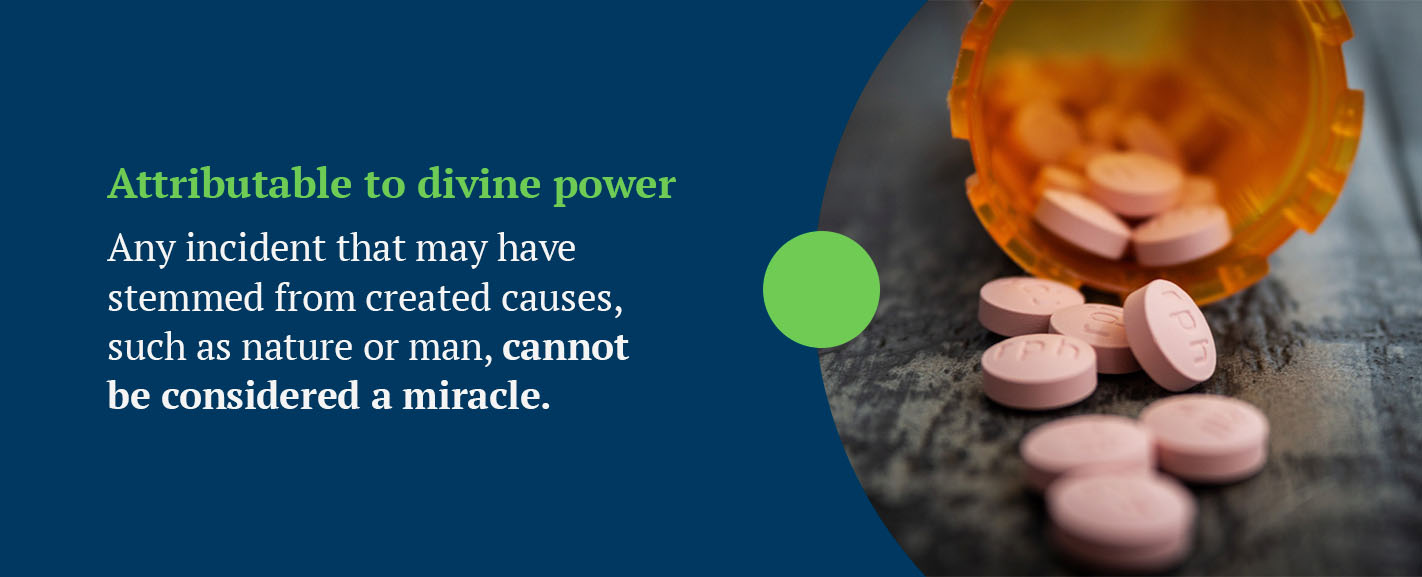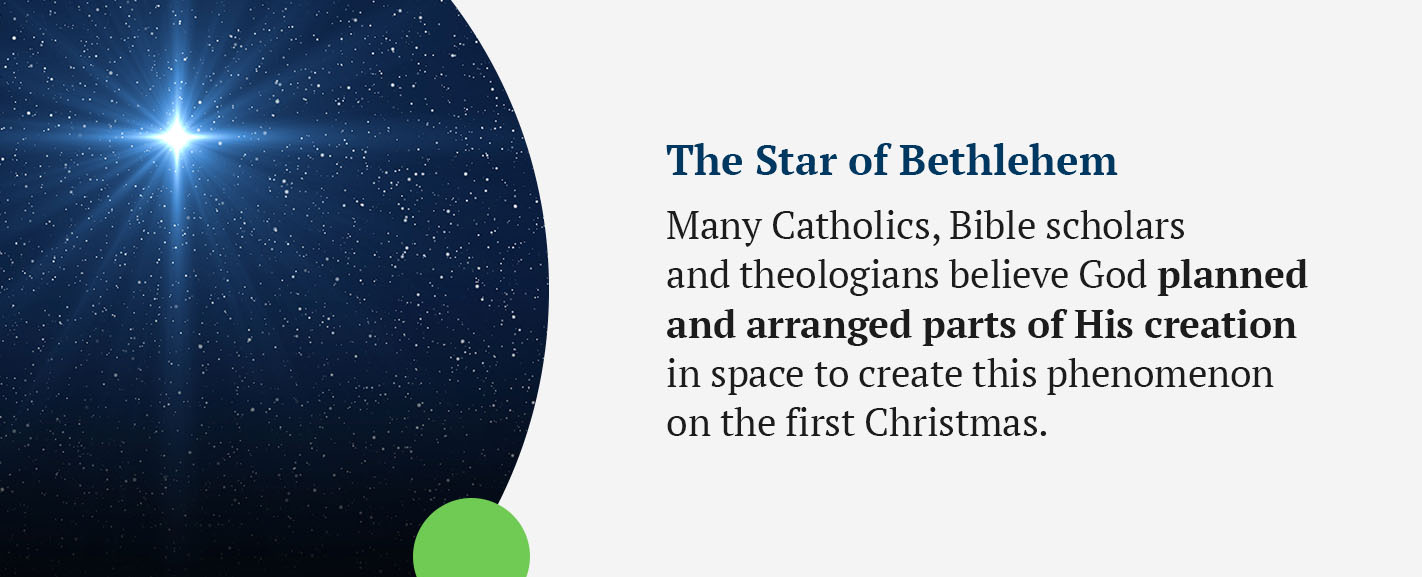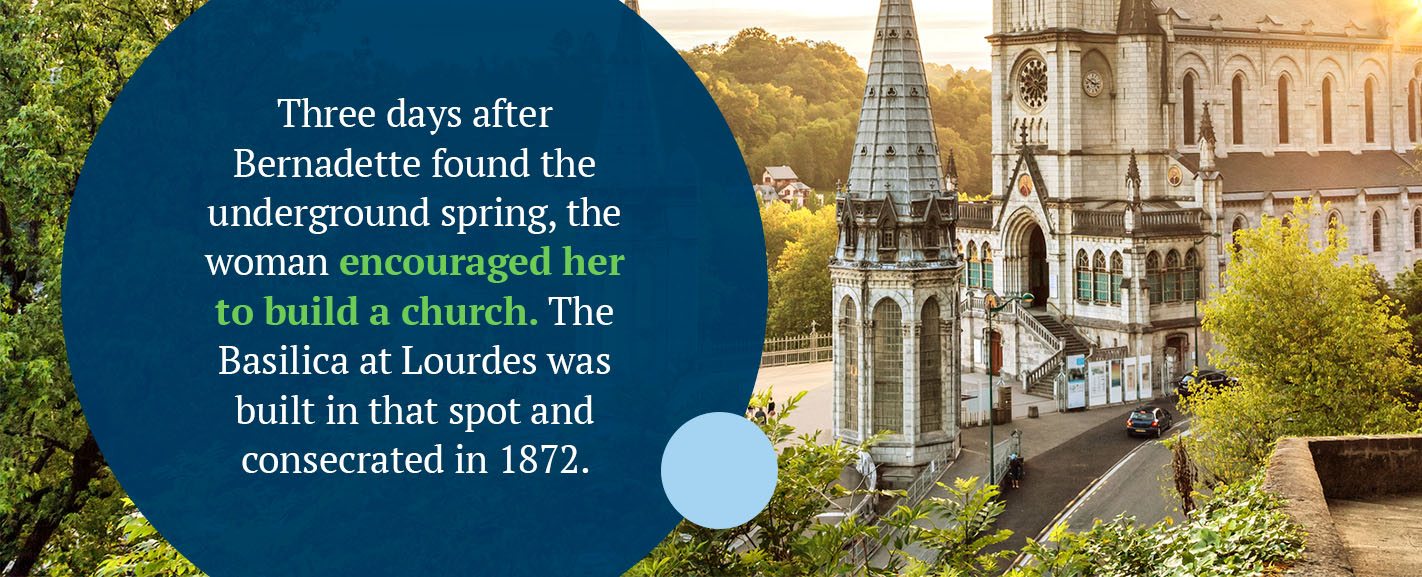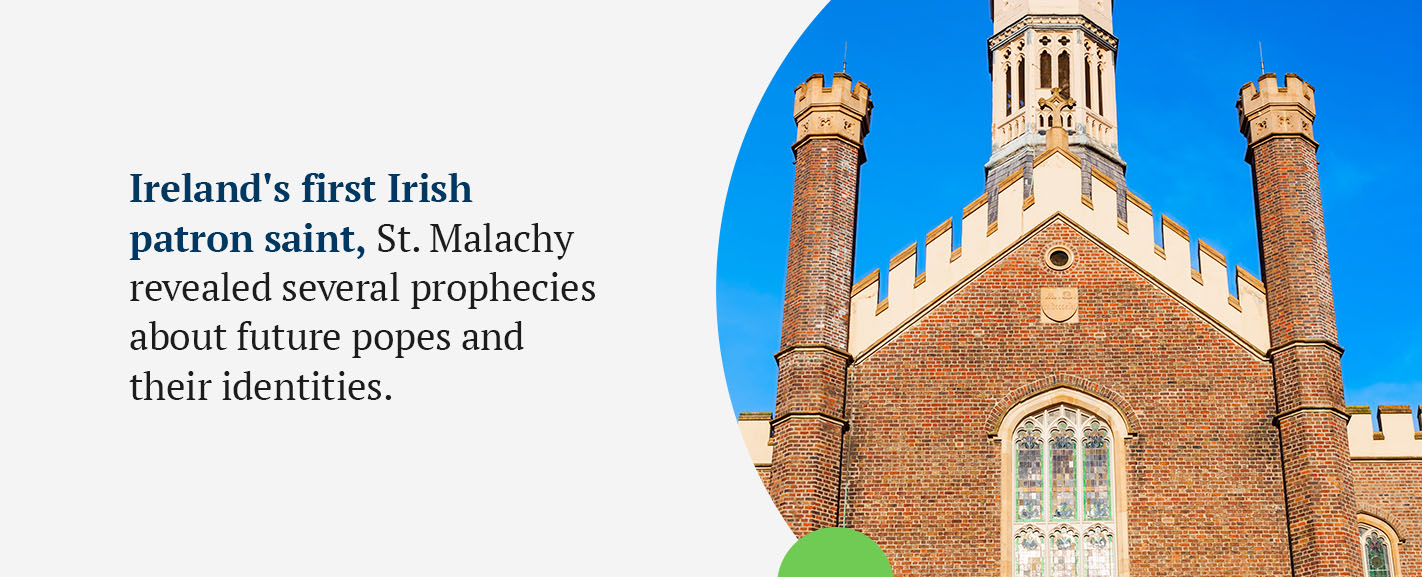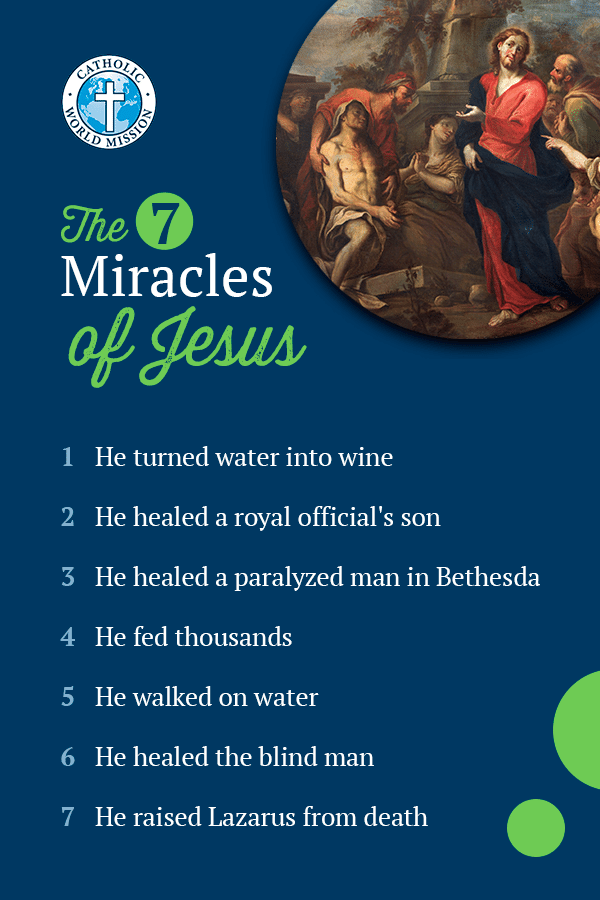 Miracles and the Catholic Tradition
Miracles and the Catholic Tradition
Miracles are an important aspect of the Catholic faith, and the Church teaches us that they’re a reminder of the power and glory of God. One of the most important aspects of miracles in Catholicism is that they show God is willing to intervene in someone’s life to take away their suffering and share His love and compassion. Learn more about Catholic miracles unexplained by science.
What Are Catholic Miracles?
The Catholic Church believes in miracles. These works of God can be manifested directly or indirectly through the intercessions and prayers of specific Catholic saints. Catholic miracles are a sign of wonder attributed to divine power and God’s mercy, such as control of nature or healing from a grave medical condition. For an act to be considered a Catholic miracle, it must meet specific requirements set forth by the Catholic Church, including:
- Attributable to divine power: One of the most important requirements for an act to be considered a Catholic miracle is if it can be directly contributed to divine power, as God is the only one who can be the cause behind a miracle. Any incident that may have stemmed from created causes, such as nature or man, cannot be considered a miracle. While these effects may be beneficial and marvelous, the Church does not qualify them as miraculous.
- Beyond the abilities of nature: Another important aspect to consider is if the effect is beyond nature’s capabilities. First, a miracle surpasses created powers in the produced effect. While nature creates life in humans, it cannot do this in somebody who is no longer alive. Additionally, the subject rather than the effect defines the miracle. While God can cause an effect that nature can produce, He does so in a way nature does not. While it is natural for a fever to pass, it can be miraculous if it leaves by command or prayer.
- Beyond nature’s order: A miracle must be God’s direct work and beyond all created powers.
- Seemingly extraordinary: A miraculous event is extraordinary, meaning it is contrary to the ordinary course of events. While the creation of human life is awe-inspiring, God decrees that creating life is part of the normal course of events.
- The ability to sense: Finally, a miracle will need to be perceptible by the senses. Miracles are meant to prove God’s revelation and must be marked with a divine character that can be sensed, and even those ignorant will realize its authenticity.
Miracles in the Catholic Church
While there are many people in heaven with God, saints are those the Catholic Church knows are in heaven, allowing people to pray directly to them. Miracles are one way to verify and confirm who is in heaven with God and working on his behalf. Events that have no scientific explanation are proof a person is in heaven and intercede on their petitioners’ behalf.
How Does the Catholic Church Recognize Miracles?
Miracles are a long-standing and deeply rooted aspect of the Catholic faith, representing the life and work of God. The highest recognition of an alleged miracle in the Catholic Church is that it is worthy of belief. By definition, Catholics are people who believe in at least two miracles — Christ’s incarnation and his resurrection, the two pillars of the faith.
Each year, thousands of people inform the Catholic Church of potential miracles. Because miracles play such an important role in the Catholic faith, a Vatican-appointed Miracle Commission composed of scientific experts and theologians works to determine whether these claims are authentic and genuine. For example, a commission researching an event of seemingly miraculous healing will call on the help of medical professionals appointed by the Vatican to determine if there is any medical explanation.
To determine sainthood, the Church investigates a person’s life. One of the most important qualifications is performing two miracles following their death. A miracle must be attributable to only their intercession. For example, a person healing from a disease is only considered a miracle if medical professionals have been unable to aid them.
Most proposed miracles often fall under the medical miracle category. While the world is full of many unexpected medical recoveries, for the Church to determine an event to be a miracle, it must be instantaneous, spontaneous and complete, leaving physicians without a scientific or natural explanation to what has occurred. Someone making an unexpected recovery from a potentially terminal illness would be an unforeseen and splendid sign of God’s love. However, it would only qualify as a miracle if a physician could not treat the patient medically.
The Church can only validate miracles if a person prayed solely to one person or saint during their ordeal. For example, if someone instantly was healed of a disease but prayed to multiple saints, there is no clear indication of who may have interceded on their behalf. Former Pope Benedict XVI confirmed that John Paul II performed a miracle when he posthumously helped heal a nun with Parkinson’s disease. Additionally, the Church confirmed another miracle when a Costa Rican woman recovered from a brain aneurism after praying to John Paul II.
How Does the Catholic Church Teach About Miracles?
The Catechism of the Catholic Church defines a miracle as a sign of wonder beyond nature’s control that can only be attributed to God or divine intercession.
The Catechism of the Catholic Church is designed for bishops, priests and pastors to teach the faith. However, catechisms are also helpful and beneficial resources for all who believe and practice the Catholic faith. Pastors use the Catechism to teach children and young people about the faith before confirmation.
History of Miracles to Determine Sainthood
While miracles play an important role in the Catholic Church, using them to determine potential sainthood has a relatively short history in the faith. Miracles only became a requirement for sainthood under Pope Gregory IX in 1234. Up to that point, sainthood was largely determined through martyrdom or tradition.
John Paull II also reduced the number of miracles needed for sainthood from three to two miracles. As scientific understanding has grown, medicine and science can now explain many things or events traditionally viewed as miracles.
How Many Miracles Does the Catholic Church Recognize?
The Church requires proof of Catholic miracles to consider them authentic and direct signs of God’s actions.
Many people think of the Shroud of Turin or uncorrupted saints whose bodies have remained intact over time when thinking about various Catholic miracles. However, numerous miracles have been declared authentic by the Catholic Church, spanning across the world and throughout centuries. The Church views these miraculous events as a sign from God and a reminder of His everlasting love and power.
Some of the most well-known miracles recognized by the Catholic Church include:
1. The 1917 Miracle of the Sun
In 1917, children in a Portuguese village returned home from shepherding and encountered an apparition of the Virgin Mary. The Virgin Mary was said to tell the children how she planned to appear each 13th day of the month for the following six months. On October 13, 1917, it was said the Virgin Mary appeared and, revealing herself only to the children, predicted the end of World War I.
She was also said to provide a silver sun to clear stormy skies. The silver light was said to turn blue as if seen through stained-glass windows and spread itself over everyone in attendance. Then the blue turned to yellow, and people prayed and wept in the presence of the miracle. Religious and non-religious people both provided eyewitness accounts to corroborate the story.
2. The Star of Bethlehem
The Star of Bethlehem helped lead the Magi to Christ and is considered a miracle in all sects of Christianity, including Catholicism. Some Catholics and theologians believe God created the star and sent it to guide the wise men to Mary in the manger.
Many Catholics, Bible scholars and theologians believe God planned and arranged parts of His creation in space to create this phenomenon on the first Christmas. Many people believe God did this to create a sign or signal to help direct the people’s attention.
3. Our Lady Of Lourdes and the Healing Water
In 1858 in Lourdes, France, 14-year-old Bernadette Soubirous lived in an abandoned prison with her family. On February 11, when she went out with her sister and friend to collect firewood, Bernadette lagged behind because of her asthma. Bernadette was alone at the Grotto of Massibelle, removing her shoes and socks when a gust of wind was said to issue from the grotto.
Bernadette claimed a woman in white robes with a blue sash, yellow roses on her feet and a rosary in her hand appeared to Bernadette. On February 25, Bernadette said the woman told her to drink and bathe in the fountain, though no fountain was visible. Bernadette began to dig and found an underground water spring that remains flowing to this day.
Three days after Bernadette found the underground spring, the woman encouraged her to build a church. The Basilica at Lourdes was built in that spot and consecrated in 1872. To this day, millions continue to flock to the spring, and there are numerous reports of visitors healing by immersing their bodies in the water. Bernadette spent her life serving as a nun, and the Church declared her a saint after her death.
St. Bernadette is one of the Catholic Church’s incorruptible saints whose bodies can be found in many places throughout the world.
4. Therese Neumann’s Stigmata
Therese Neumann, born in Germany in 1898, was reported to be a healer and a stigmatic, someone who bears scars or wounds in locations that correspond with the crucifixion of Jesus Christ.
In 1926, various stigmata appeared across her body throughout Lent, including nine on her head evoking Christ’s crown of thorns. She also experienced marks across her back reminiscent of flogging and wounds to her hands.
These marks remained visible on her body until she passed in 1962. Neumann stopped eating food in 1922 and water in 1926 and, instead, claimed to only need Holy Communion each day for her health. An archbishop ordered a 15-day observation of Therese Neumann to support her claims. Psychiatrist Dr. Ewald, physician Dr. Seifl and nuns trained as nurses tracked Neumann’s weight, food and water and confirmed that Neumann seemed to subsist on her daily communion.
5. The Prophecies of St. Malachy
St. Malachy, the Archbishop of Armagh, was canonized by Pope Clement III. Ireland’s first Irish patron saint, St. Malachy revealed several prophecies about future popes and their identities.
The conclave that chooses new popes often returns to St. Malachy’s prophecies and references his visions.
6. Our Lady of Zeitoun
In Zeitoun, Egypt, millions of people claimed to see an illuminated vision of the Virgin Mary on St. Mary’s Coptic Orthodox Church between 1968 and 1971. The vision of the glowing woman would reportedly appear and disappear for anywhere from a few minutes to hours as crowds of people stood at the foot of the church.
In some instances, people even claimed to have seen the woman joined by doves flying around her, a baby Jesus, St. Joseph or olive branches. Local police opened several investigations and attempted to disperse the gatherings from the church and surrounding area. They even performed a 15-mile radius search around the church to ensure no special effects equipment, lighting or projectors were the cause of the visions.
Both believers and non-believers of God claim to have seen the figure. Many theologians and Catholics believe that the vision of Mary is a sign of a promise she made to the family who originally built the church. In 1918, the Virgin Mary appeared to Ibrahim Khalil, telling him to build a church on the land in her name and that she would return to bless the church. The church’s construction was completed in 1924, and the Virgin Mary revealed herself in 1968 in what is considered the Miracle of Zeitoun.
What Are the 7 Miracles of Jesus?
While He has performed countless miracles, some of His most important and fundamental miracles are found in the published Book of Signs:
- He turned water into wine: One of the most well-known miracles of Jesus is that he turned water into wine. In John 2:1-11, when the wine ran out at a wedding in Cana, Jesus was able to turn two stone pots of water into fine wine.
- He healed a royal official’s son: In John 4:46-54, a royal official came to Cana seeking Jesus to heal his son twenty miles away in Capernaum. Even without moving, Jesus healed the boy from a distance.
- He healed a paralyzed man in Bethesda: Many times, Jesus demonstrated his power by healing the perpetually ill. In John 5:1-15, Jesus noticed a disabled man by the Bethesda pool. He told the man, “Rise, take up your mat, and walk,” and the man walked for the first time in 38 years.
- He fed thousands: Jesus fed an enormous crowd of people with just two fish and five barley loaves. In John 6:5-14, Jesus and His disciples look out over a crowd so large that “two hundred days’ wages worth of food would not be enough for each of them to have a little.” Then “Jesus took the loaves, gave thanks, and distributed them to those who were reclining, and also as much of the fish as they wanted.”
- He walked on water: One of the most well-known stories of Jesus’s miracles was when He walked on water, signifying his power and how he defies physical laws. John 6:16-24 shares the story of Jesus walking on water: “When they had rowed about three or four miles, they saw Jesus walking on the sea* and coming near the boat, and they began to be afraid. / But he said to them, ‘It is I. Do not be afraid.’ They wanted to take him into the boat, but the boat immediately arrived at the shore to which they were heading.”
- He healed the blind man: In John 9:1-7, Jesus passed by a man blind since birth. When his disciples asked, “Rabbi, who sinned, this man or his parents, that he was born blind?” Jesus responded, “Neither he nor his parents sinned; it is so that the works of God might be made visible through him.” Jesus then anointed the man’s eyes and told him to wash in the Pool of Siloam, and the man could see.
- He raised Lazarus from death: Jesus also exercised his power over death in John 11:1-45 when he brought Lazarus back from the dead.
When Was the Last Catholic Miracle?
Miracles continue to happen throughout the world, and the Catholic Church is committed to ensuring the authenticity of any claims before declaring an event a miracle.
One of the most recent events to be recognized as a miracle by the Catholic Church is the miracle at the Marian Shrine of Our Lady of Lourdes in France in 2008, which is the 70th recognized Lourdes miracle.
Bishop Jacques Benoit-Gonin of France declared this miracle on February 11, 2018, on the World Day of the Sick. The miracle involved Sister Bernadette Moriau, a French nun suffering from various spinal complications. Moriau had needed to use a wheelchair since 1980 and was taking morphine to control her pain.
Moriau attended a blessing for the sick at the shrine. She noted feeling an overall sense of well-being and, when she returned to her room, heard a voice encouraging her to take her braces off. When she did, she discovered that she was miraculously healed — she could instantaneously walk from her wheelchair and no longer needed pain medication or braces.
Even more recently, Pope Francis recognized a miracle performed by Pope John Paul I. Candela Giarda, a young girl in Buenos Aires, Argentina, had a severe case of acute encephalitis. Once she was hospitalized, doctors eventually diagnosed her with Febrile Infection-Related Epilepsy Syndrome that had led to brain dysfunction, uncontrollable seizures and septic shock. Doctors informed the family that her death was imminent.
A local priest, Fr. José Dabusti, encouraged the nurses, family and others to pray to John Paul for his intercession. Candela began to improve the next day. Her immediate improvement, along with her complete recovery in just over six weeks, was attributed to a miracle and a sign of John Paul’s intercession. On October 13, 2021, Pope Francis signed a decree recognizing the event as a miracle.
Share in God’s Miracle and Send Your Prayer Intentions to the Catholic World Mission
The Catholic Church recognizes many miracles performed by God and the saints. At Catholic World Mission, we help support and empower people throughout the world while sharing God’s truth, love and glory. If you or a loved one are in need of prayers, please send us your prayer intentions. We believe prayer is a powerful way to connect with God. As we appeal to God, we can recognize His goodness with thankfulness and reverence.
Please consider supporting our mission to spread the word and glory of God and donate to Catholic World Mission online today.
Learn More About Catholic History
Join Our Mailing List

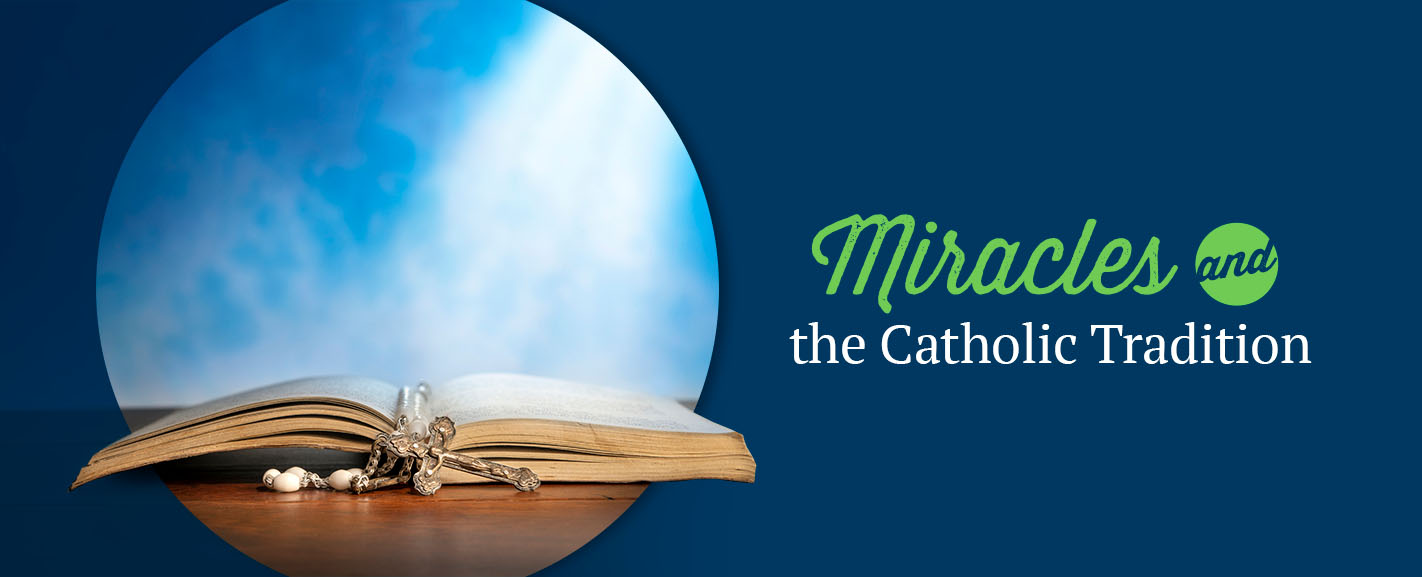 Miracles and the Catholic Tradition
Miracles and the Catholic Tradition